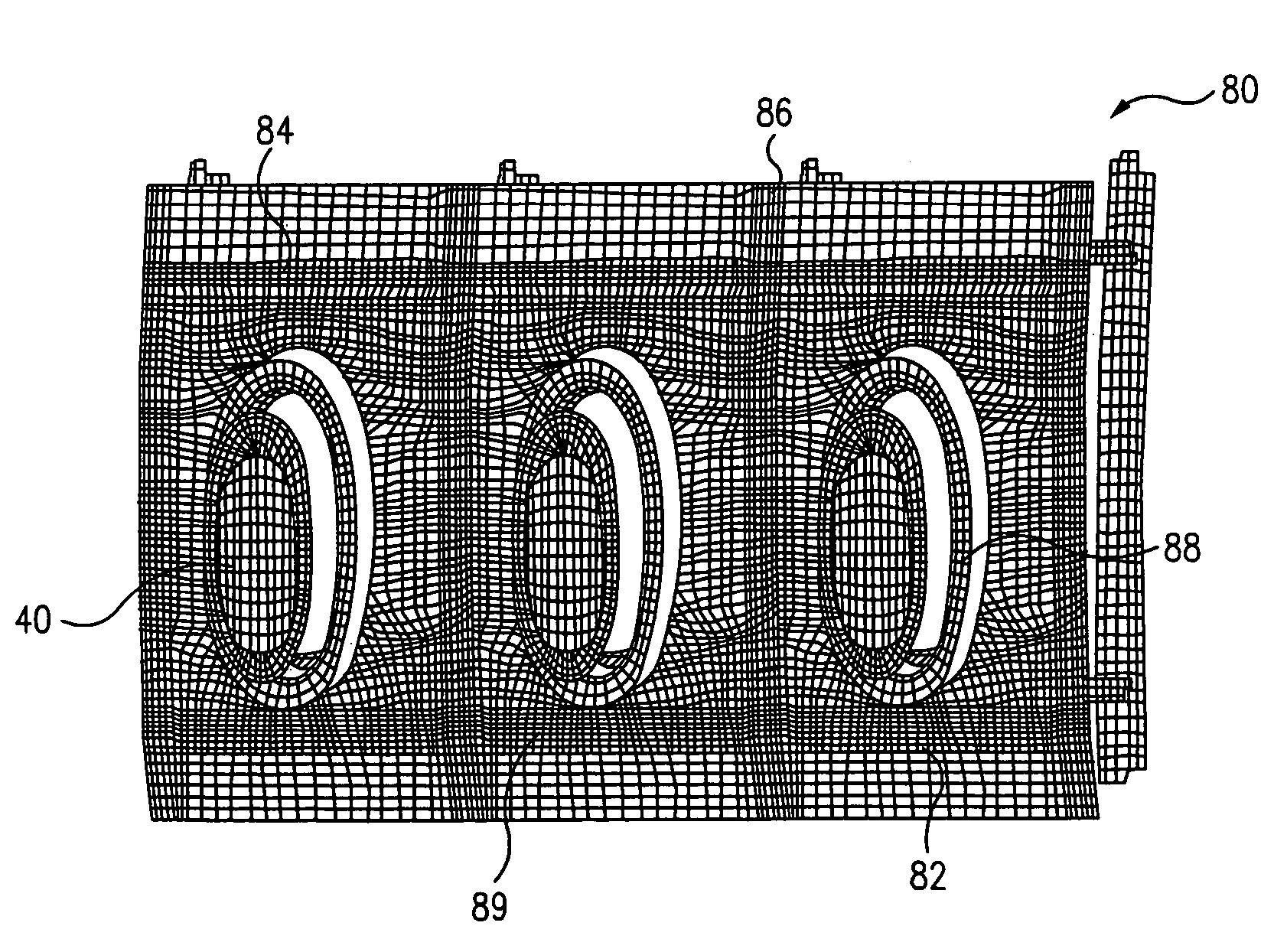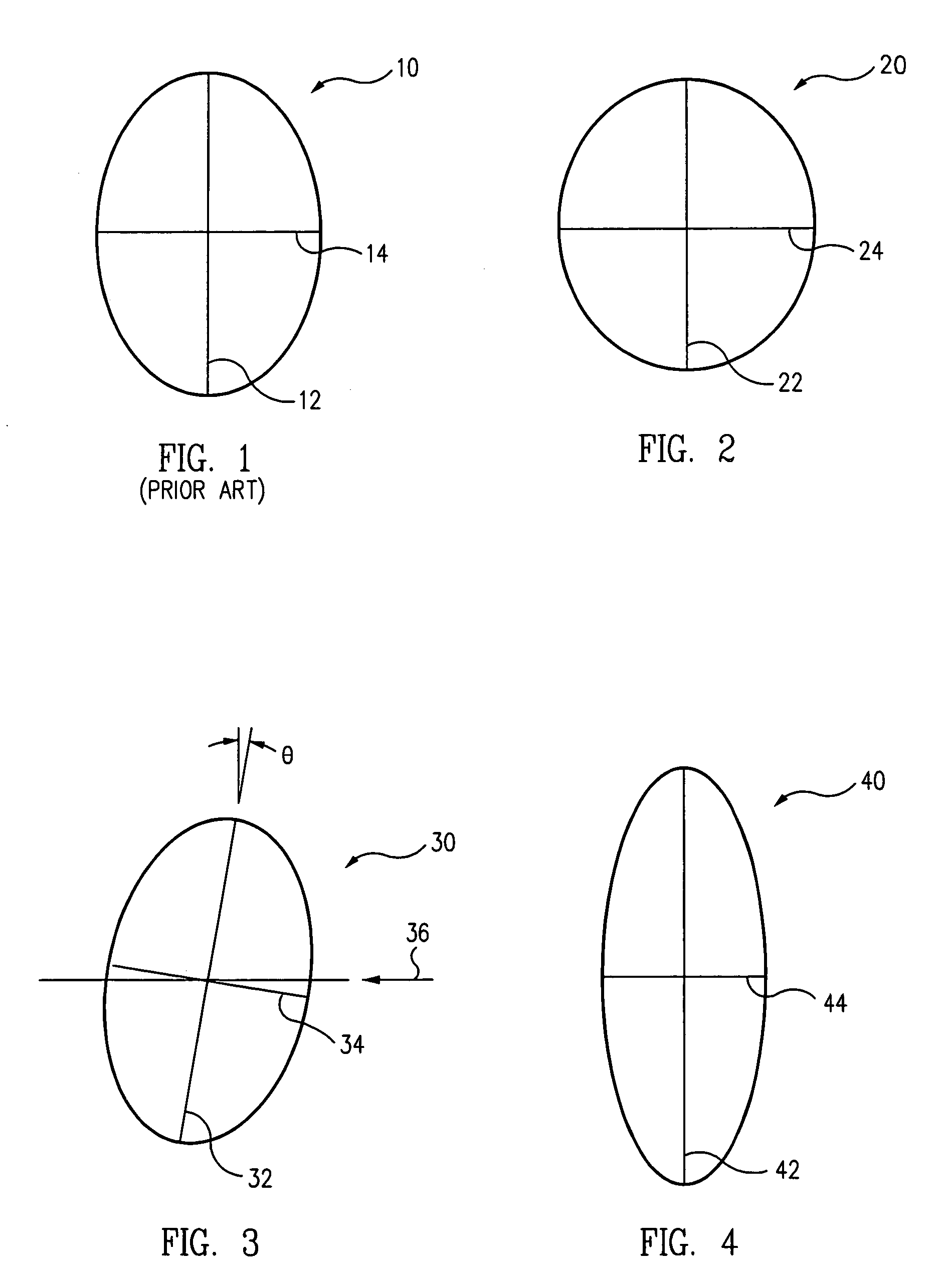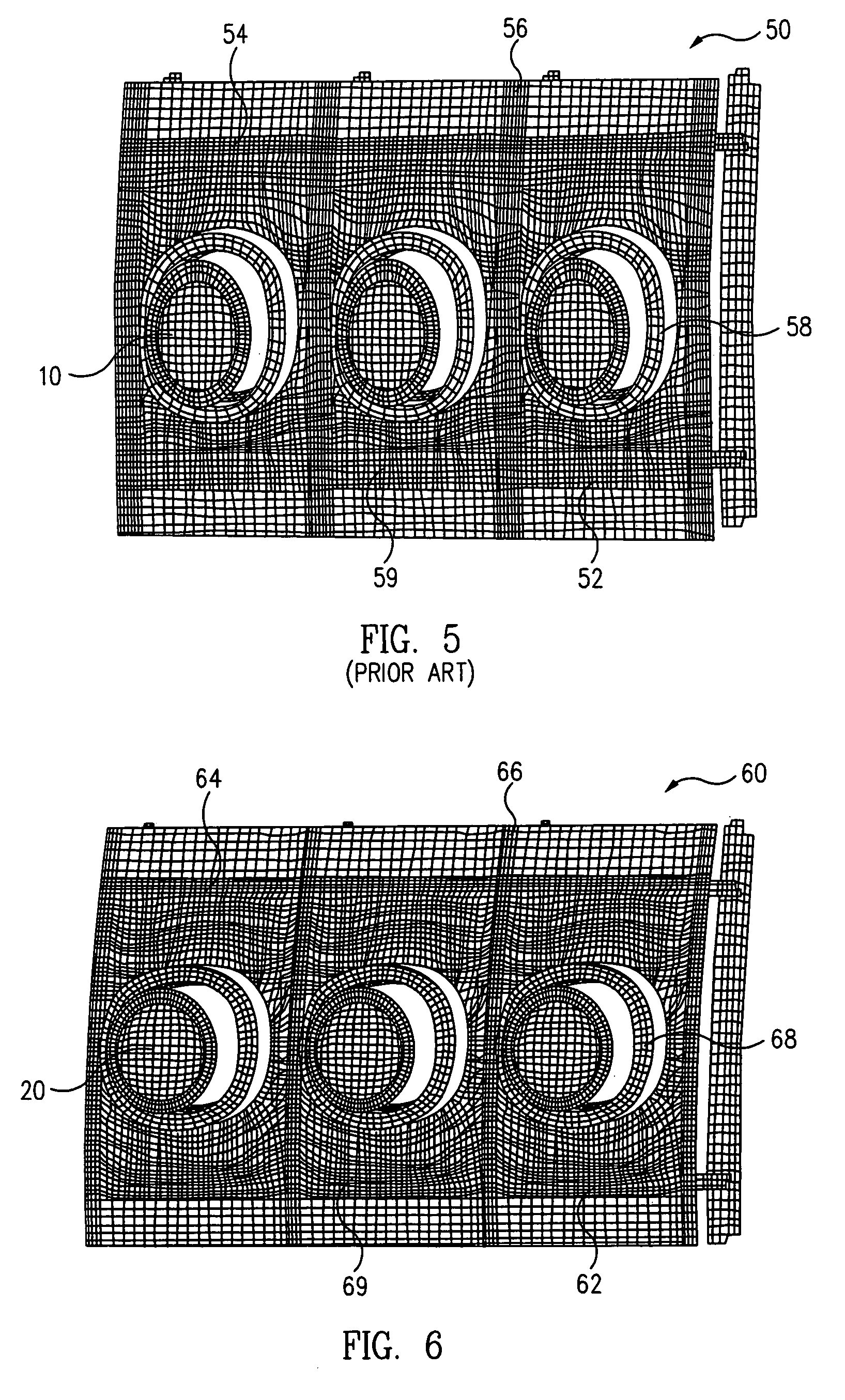Optimal aircraft window shape for noise control
a technology for aircraft windows and noise control, applied in aircraft crew accommodation, instruments, transportation and packaging, etc., can solve the problems of reducing the noise of external sources, reducing the noise of windows, and using optically transparent materials in the windows, so as to maximize passenger visibility and minimize the amount of acoustic nois
- Summary
- Abstract
- Description
- Claims
- Application Information
AI Technical Summary
Benefits of technology
Problems solved by technology
Method used
Image
Examples
Embodiment Construction
[0020]The technical problem addressed by this invention is the provision of a subsonic airliner passenger window shape that reduces the vibration levels of and the noise transmitted through a “window belt,” i.e., a section of the sidewalls of the aircraft's fuselage that includes the windows, that employs composite materials in its structure and a relatively large transparent window area. The problem evaluated involved the excitation of a section of the surface of the aircraft's fuselage including the above window belt by a turbulent boundary layer (“TBL”), and the results obtained were based on the structural response of the window belt to such an excitation.
[0021]The basic window shape selected for evaluation was that of an ellipse, because it was considered that such a window shape would best satisfy two competing design considerations, viz., a minimization or complete avoidance of any sharp corners or radii in the window that could act as stress raisers affecting the structural ...
PUM
 Login to View More
Login to View More Abstract
Description
Claims
Application Information
 Login to View More
Login to View More - R&D
- Intellectual Property
- Life Sciences
- Materials
- Tech Scout
- Unparalleled Data Quality
- Higher Quality Content
- 60% Fewer Hallucinations
Browse by: Latest US Patents, China's latest patents, Technical Efficacy Thesaurus, Application Domain, Technology Topic, Popular Technical Reports.
© 2025 PatSnap. All rights reserved.Legal|Privacy policy|Modern Slavery Act Transparency Statement|Sitemap|About US| Contact US: help@patsnap.com



